RESEARCH
| DESCRIPTION | HISTORY | CONDITION |
Please Click On Any Picture for a Larger Version
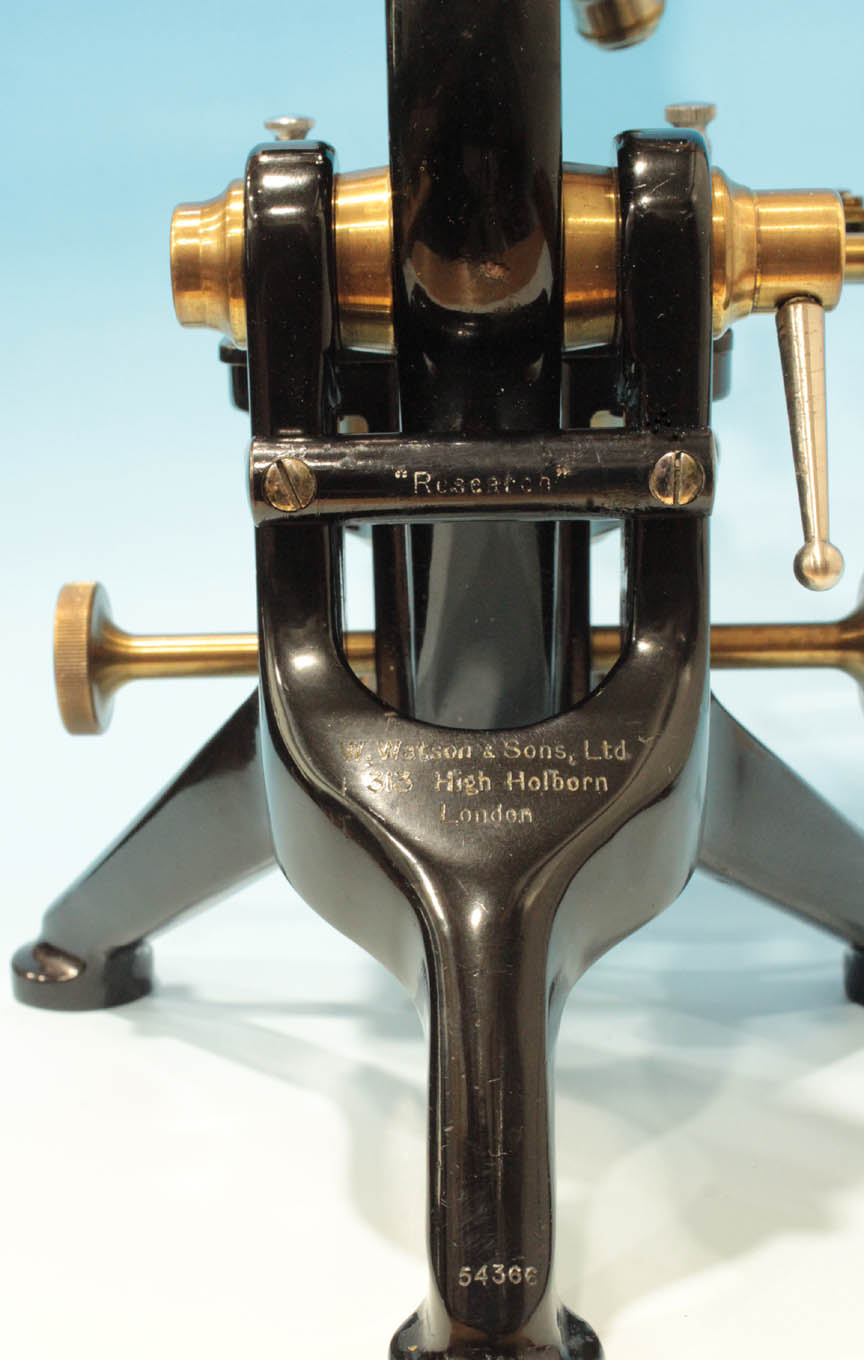 The cross brace is rod-shaped and is signed
The cross brace is rod-shaped and is signed "Research". On the Y-shaped part of the tripod it is signed
W. Watson & Sons Ltd, 313 High Holborn, London. The rear foot bears the serial number of 54366.
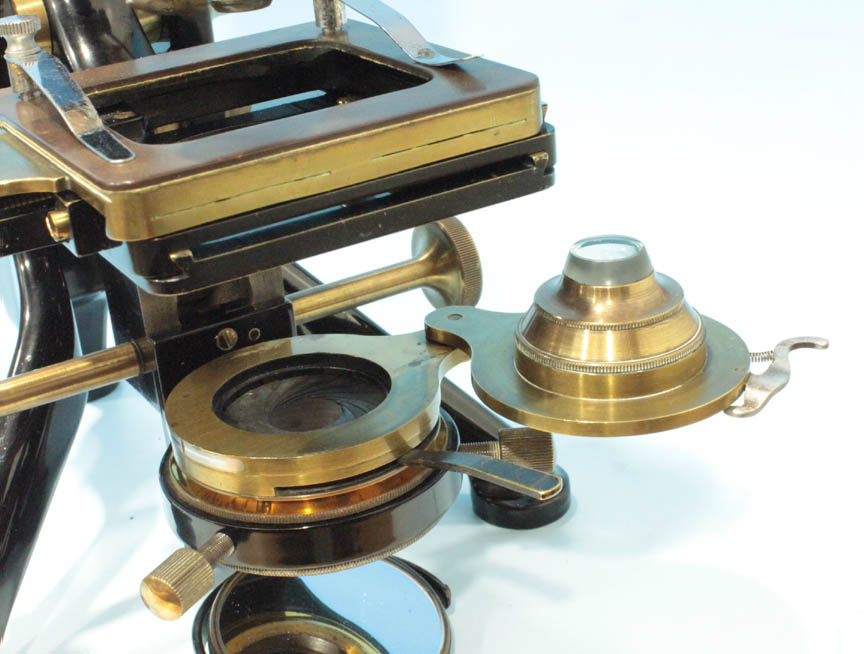 The limb extends below the stage to form the housing for the pinion. The sliding bar with the plano and concave gimbaled mirror on its end fits into a hole on the bottom of the rear of this part. The brass piece with the mirror on its distal end is a rod, flattened on one side and held in position by an internal spring. The flattened part assures it aligns with the optical axis but it can be rotated outside the optical axis as well. The substage is focused by diagonal rack and pinion with knurled knobs on both the right and left sides of the microscope. The substage ring for accepting the condenser has two small knurled knobs for centering. It is equipped with a Watson condenser with the double-W Watson insignia. This condenser features a removable top element, and an iris diaphragm beneath the optical elements; the optical part may be swung out of the optical axis completely and when swung back is held in place with a convenient sprung latch.
The limb extends below the stage to form the housing for the pinion. The sliding bar with the plano and concave gimbaled mirror on its end fits into a hole on the bottom of the rear of this part. The brass piece with the mirror on its distal end is a rod, flattened on one side and held in position by an internal spring. The flattened part assures it aligns with the optical axis but it can be rotated outside the optical axis as well. The substage is focused by diagonal rack and pinion with knurled knobs on both the right and left sides of the microscope. The substage ring for accepting the condenser has two small knurled knobs for centering. It is equipped with a Watson condenser with the double-W Watson insignia. This condenser features a removable top element, and an iris diaphragm beneath the optical elements; the optical part may be swung out of the optical axis completely and when swung back is held in place with a convenient sprung latch. 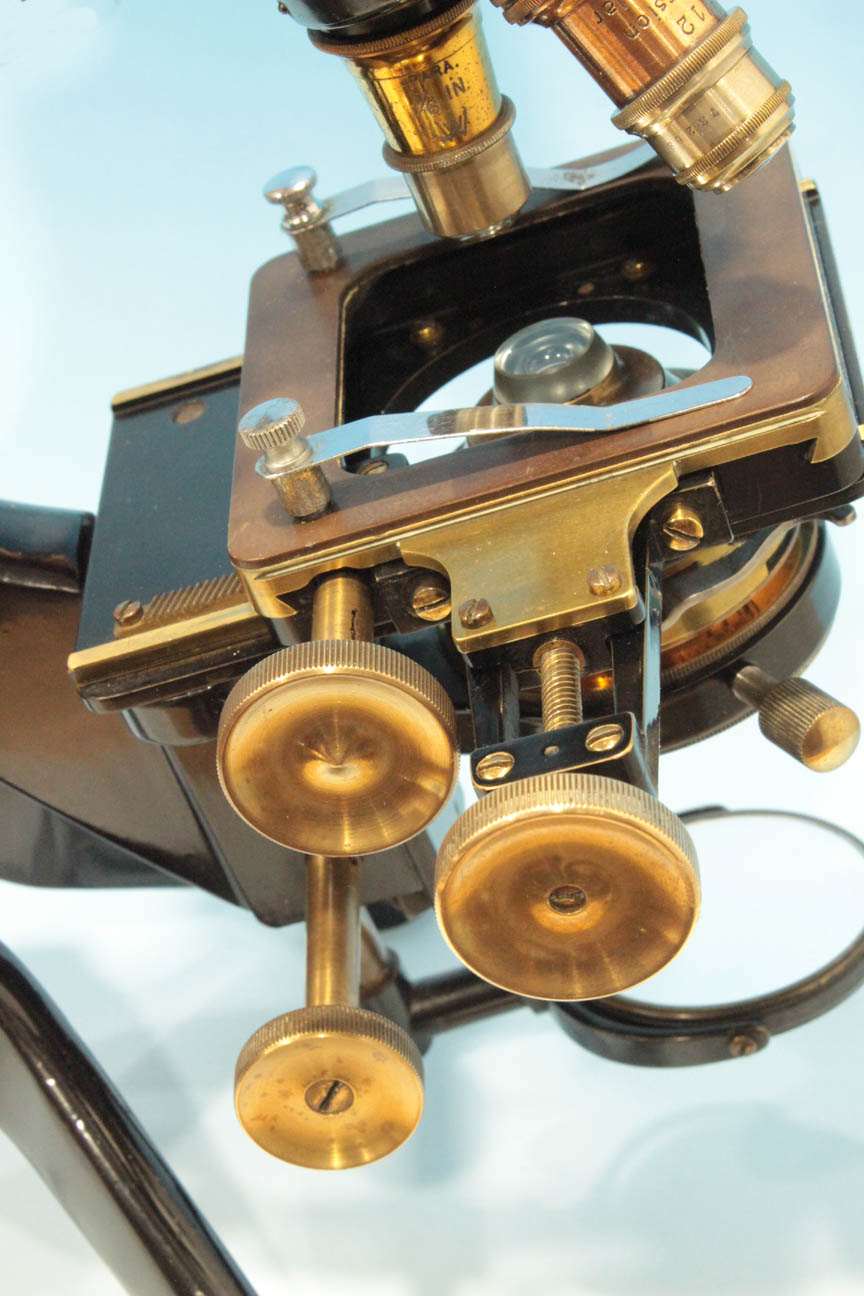
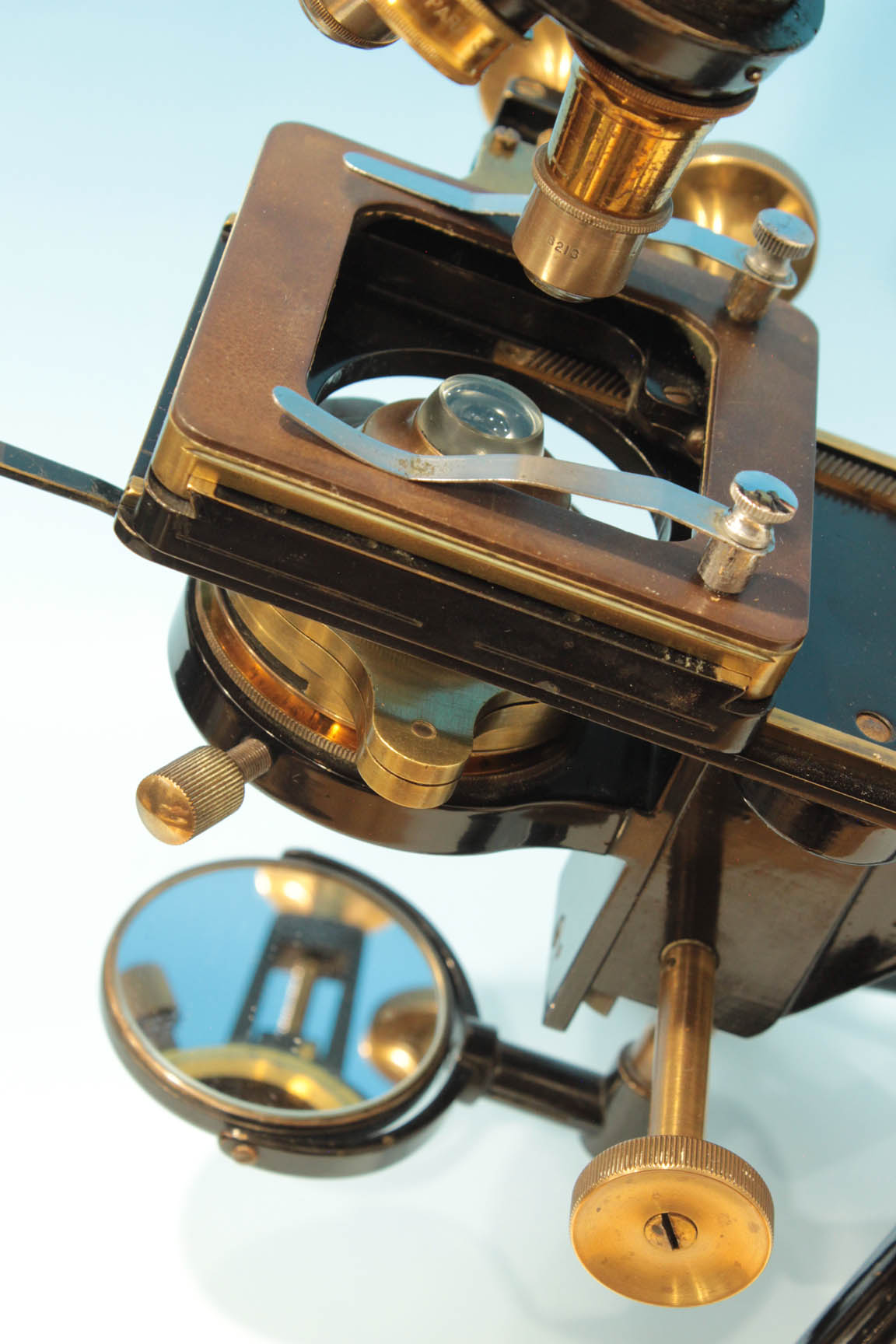 The mechanical stage is the Watson
The mechanical stage is the Watson Standard Mechanical Stagewith diagonal rack and pinion adjustment in the X-axis and spiral screw adjustment for the Y-axis, each controlled with separate knurled knobs on the right side of the stage. There are two removable nickel-plated stage clips. The opening in the top of the stage is 2 1/8 inches square with rounded corners. There is about 1 inch travel in both the X and Y axes. The stage is covered in brown hard-rubber.
UNIV. GLAS., G.R.I. PATH., 76, on the nickel plated area.
is a bit unclear. The period Watson Black and White objectives have scattered losses to their outer finish.Research
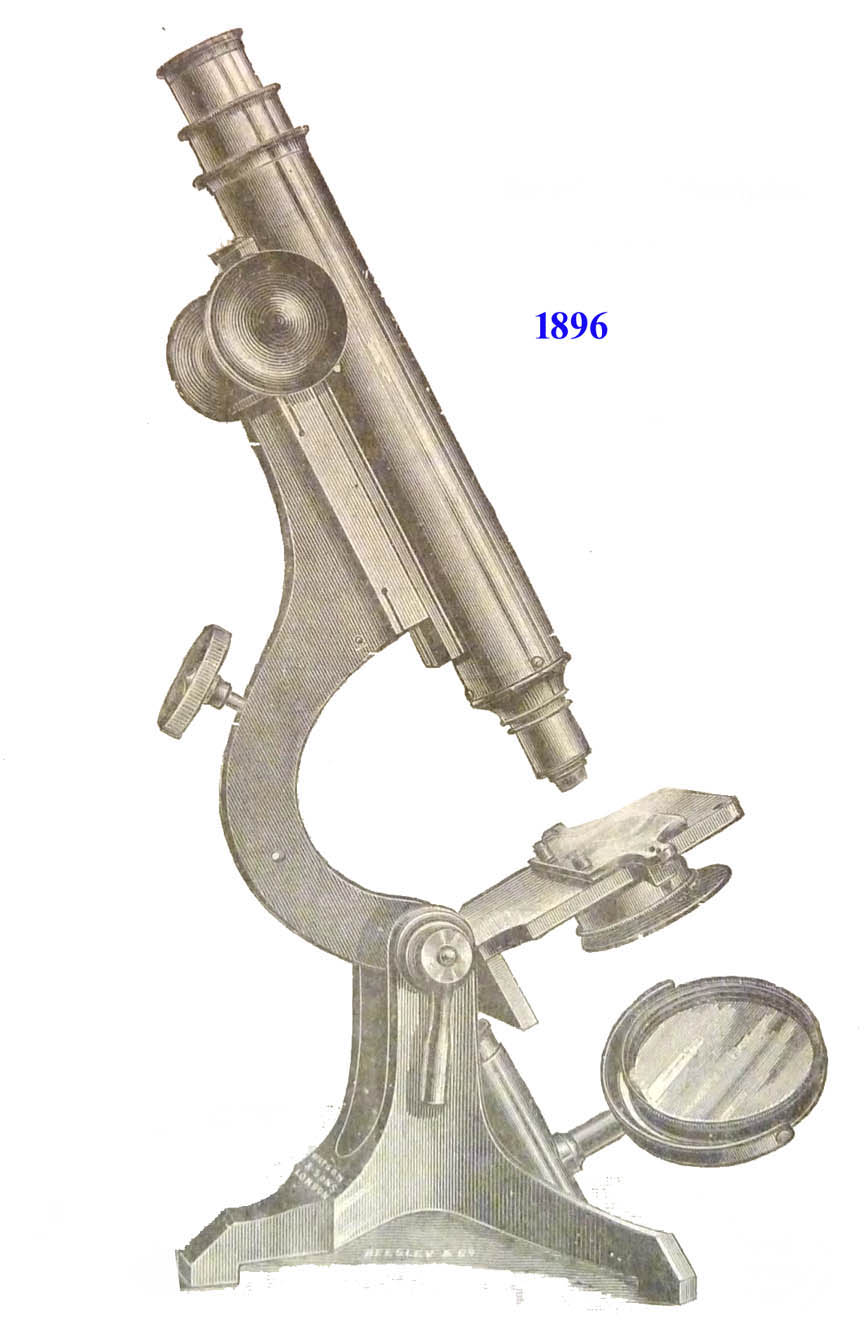 The Research model, apparently introduced about 1893, and also found in the 1896 catalog, is quite different than later models. In fact it was a completely different design. In the catalog from 1896, when supplied in its standard form, the Research was a Lister Limb model with rack and pinion coarse focusing, but long lever fine focusing from within the limb. It had a sliding stage holder, no substage and a tripod with a lower center of gravity than the Edinburgh H and the later Research models. It had a ring on the bottom of the stage to accept accessories which included a wheel of apertures. But for additional cost, options did include a substage like the Edinburgh H, a mechanical stage, and cork pads for the feet.
The Research model, apparently introduced about 1893, and also found in the 1896 catalog, is quite different than later models. In fact it was a completely different design. In the catalog from 1896, when supplied in its standard form, the Research was a Lister Limb model with rack and pinion coarse focusing, but long lever fine focusing from within the limb. It had a sliding stage holder, no substage and a tripod with a lower center of gravity than the Edinburgh H and the later Research models. It had a ring on the bottom of the stage to accept accessories which included a wheel of apertures. But for additional cost, options did include a substage like the Edinburgh H, a mechanical stage, and cork pads for the feet.
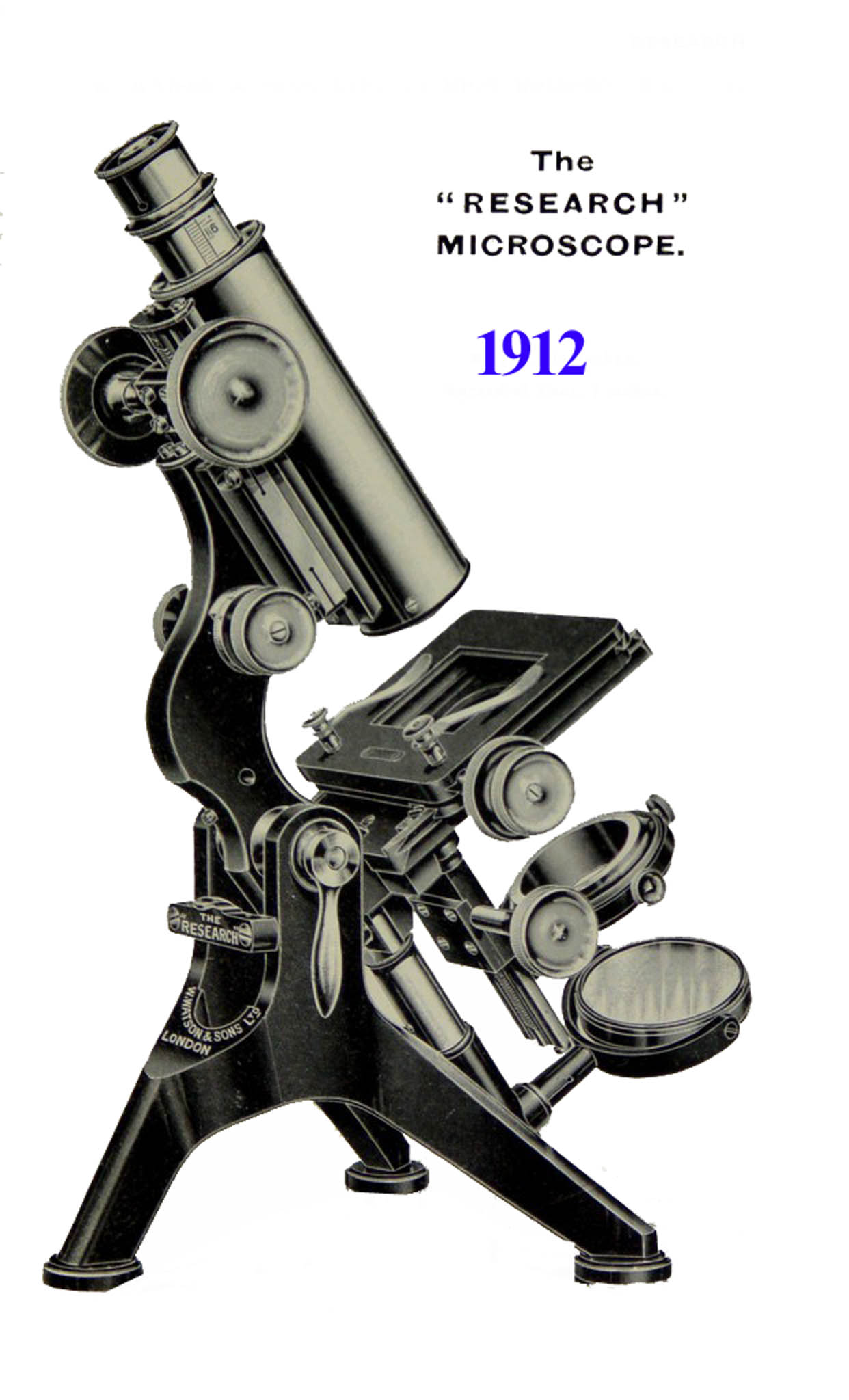 No Research model is found listed in the Watson catalogs from 1900 to 1910. The next time it is listed is in 1912 and was then based on the Edinburgh model. Starting in 1912, the Research models generally followed the style of the Edinburgh H, except for the side-controlled fine adjustment and the shape of the limb, their hallmarks. Although the limb was initially the same shape as the Edinburgh, in about 1913 it changed to a simple arc shape as in the example at the top of this page. Even in 1945, the Edinburgh retained its original shape of limb while the Research had the Arc-shaped limb originally introduced about 1913.
No Research model is found listed in the Watson catalogs from 1900 to 1910. The next time it is listed is in 1912 and was then based on the Edinburgh model. Starting in 1912, the Research models generally followed the style of the Edinburgh H, except for the side-controlled fine adjustment and the shape of the limb, their hallmarks. Although the limb was initially the same shape as the Edinburgh, in about 1913 it changed to a simple arc shape as in the example at the top of this page. Even in 1945, the Edinburgh retained its original shape of limb while the Research had the Arc-shaped limb originally introduced about 1913. 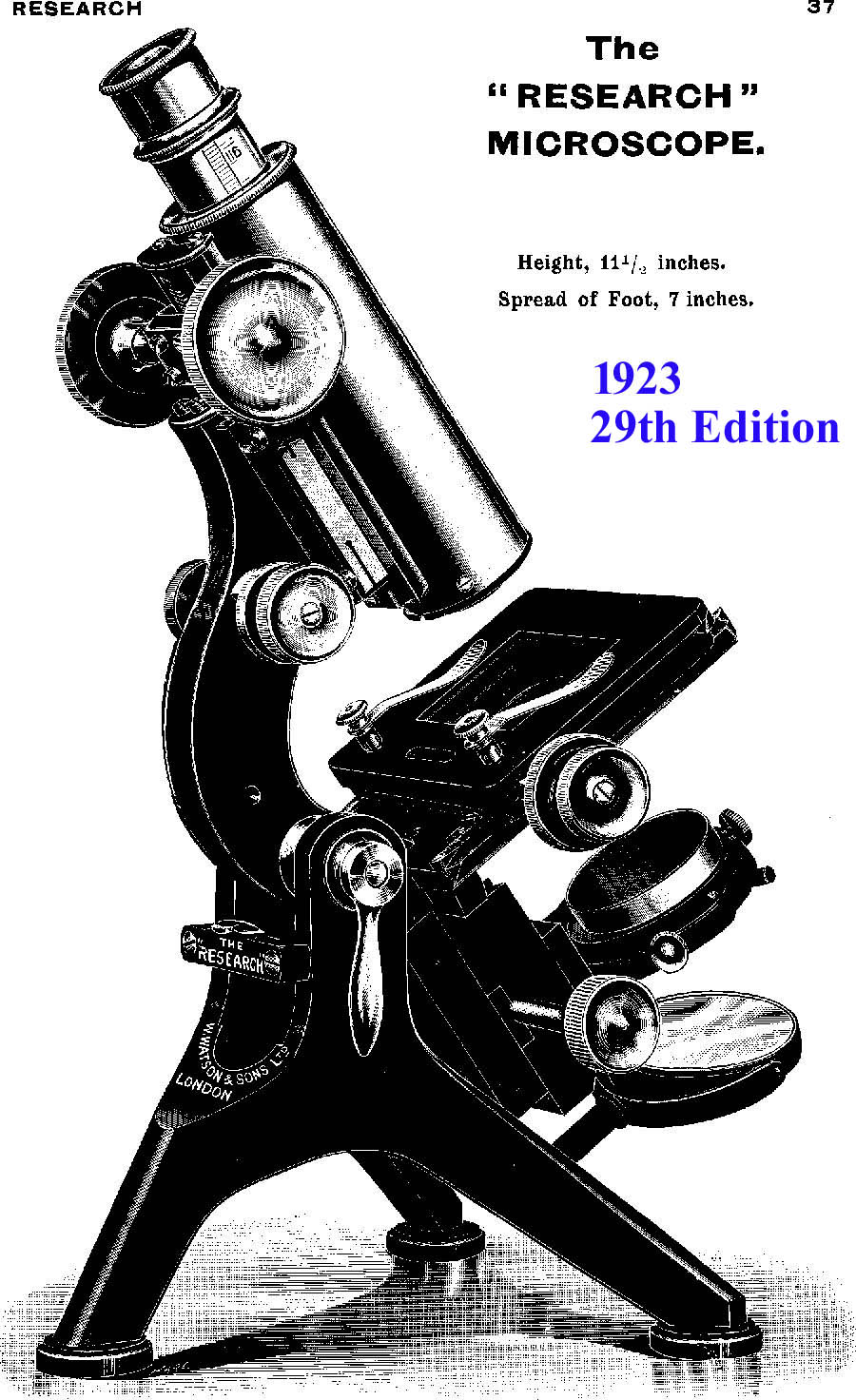
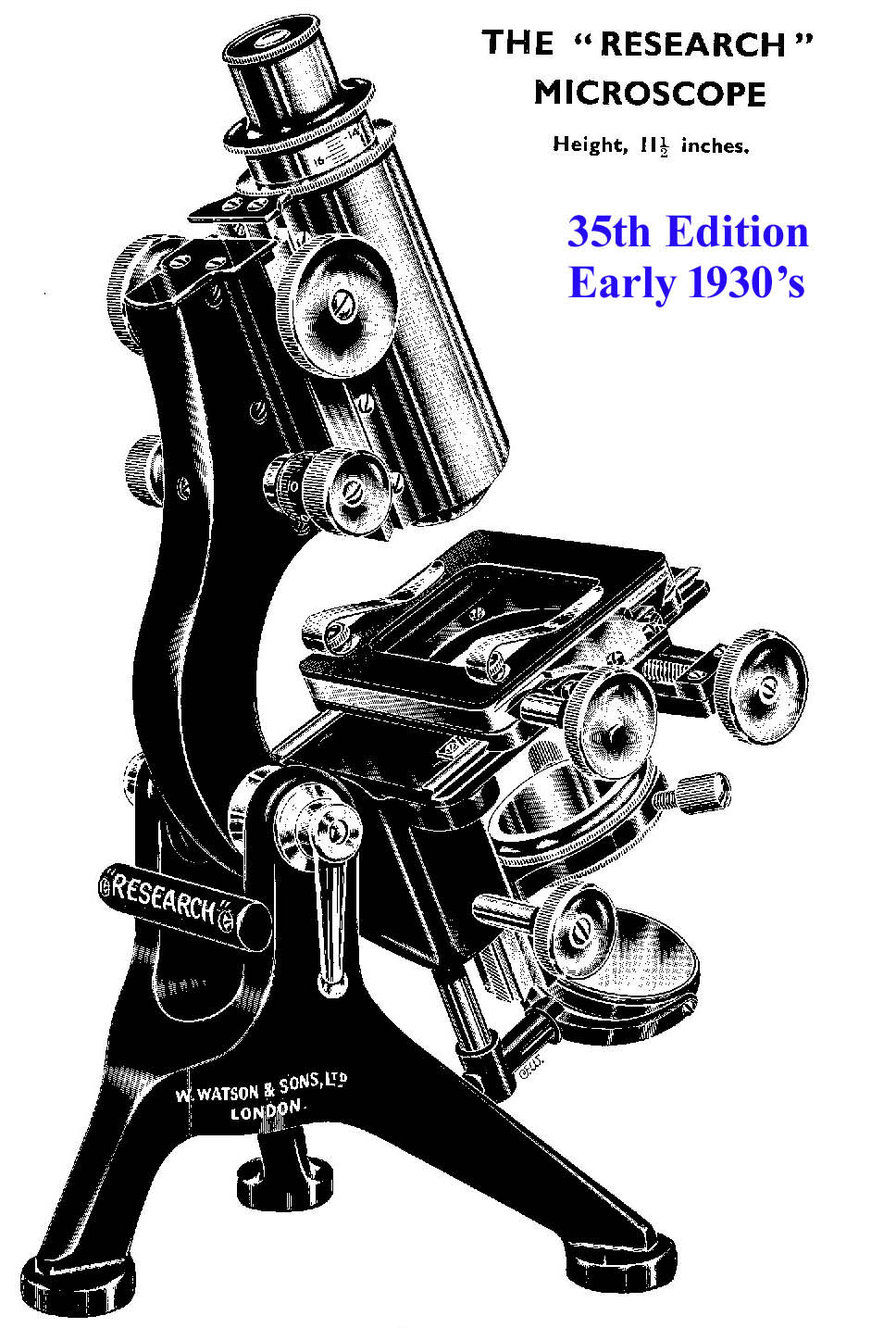 Some features of the Research simply matched the Edinburgh model changes. The substage was separate from the mirror tailpiece housing until 1923 when a new, heftier pinion box, actually formed from part of the limb, was introduced, and the mirror bar fit in to the back part of that area of the limb. A concentric control for the mechanical stage was used through 1928, but reverted to the Watson
Some features of the Research simply matched the Edinburgh model changes. The substage was separate from the mirror tailpiece housing until 1923 when a new, heftier pinion box, actually formed from part of the limb, was introduced, and the mirror bar fit in to the back part of that area of the limb. A concentric control for the mechanical stage was used through 1928, but reverted to the Watson standardtype about 1930. The inclination tension adjusting lever changed shape at the same time to a stronger form tapering outward from its attachment and terminating in a ball. Also around 1930, the cross bar support on the back changed from a more rectangular form to a rod, and the drawtube became wider-changing from a little less than 1 inch (25mm) to 1 3/8 inch (34 mm) diameter. The hole in the limb for accessories was no longer present by that time.